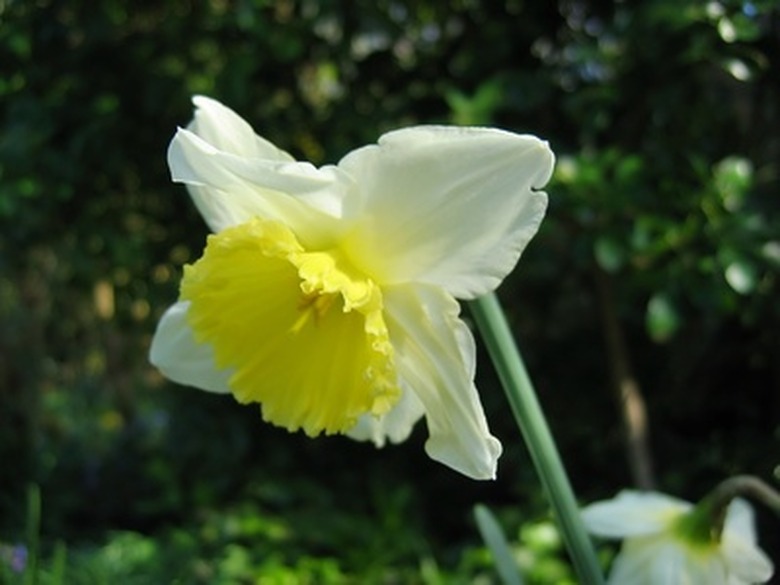What Flowers Are Poisonous To Humans?
Several types of poisonous flowers are often found growing wild in fields and gardens. Many toxic flowers look stunning with their bright, bold colors that are able to attract children and especially toddlers prone to placing most anything into their mouths. That's why it's crucial parents know which flowers are poisonous, as well as stress the importance of not handling vegetation. Contact with some flowers can cause severe illness and even death.
Foxglove
Foxglove is a common ornamental plant with bell-shaped or tubular flowers in varying shades of purple and white. These flowers are extremely toxic to the cardiovascular and gastrointestinal system. When foxglove is ingested, toxic reactions can occur–leading to serious illness and even death in humans and animals. Pharmaceutical drugs used in heart congestion cases, including digitalis and digoxin, come from the foxglove plant, according to CookieBabyInc.com. When ingested, these chemicals can increase the force of a heart muscle contracting.
- Several types of poisonous flowers are often found growing wild in fields and gardens.
- When foxglove is ingested, toxic reactions can occur–leading to serious illness and even death in humans and animals.
Daffodils
Daffodils, with their creamy white or yellow blooms, usually don't cause death, although they do have toxic alkaloids. Alkaloids are alkaline chemicals containing nitrogen and are able to cause abdominal pain, dizziness and sometimes convulsions, if ingested. The plant's berries, stems and roots all have toxic parts, with the most potent concentration typically found in its underground, swollen stems including rhizomes, bulbs and corms. Symptoms of plant poisoning from daffodils are diarrhea, dizziness, nausea and pain with convulsions and even death if enough of the plant has been ingested.
Buttercups
Buttercups are known for their bright yellow blossoms that grow mostly in cool temperate climates in many regions of the world. Many people don't realize they're toxic, but all parts of this plant are somewhat poisonous when fresh. The strong acrid juice found in this plant is able to blister skin. Ingestion can cause mouth burning, vomiting, bloody diarrhea and abdominal pain. Other reactions include burning sensations, skin redness and blisters when skin makes contact with the plant's sap. Protoanemonin is the plant's toxic element.
- Daffodils, with their creamy white or yellow blooms, usually don't cause death, although they do have toxic alkaloids.
- Many people don't realize they're toxic, but all parts of this plant are somewhat poisonous when fresh.
Morning Glories
Morning glories are commonly found growing in fields throughout North America. They're so-named because their flowers often only last for a single morning and then die in the afternoon. Morning glories' blooms range in size from huge to compact. Colors include light blue, purple and magenta shades. These attractive flowers contain poisonous seeds. According to eBasedPrevention.org, eating 50 or more morning glory seeds is somewhat like ingesting marijuana. Morning glory seeds have been used as sources of precursors for making LSD (Lysergic Acid Diethylamide). Eating significant quantities of the plant's seeds can lead to digestive problems, nausea, blurred vision, mental confusion, comma and even coma conditions.
- Morning glories are commonly found growing in fields throughout North America.
- Morning glory seeds have been used as sources of precursors for making LSD (Lysergic Acid Diethylamide).
